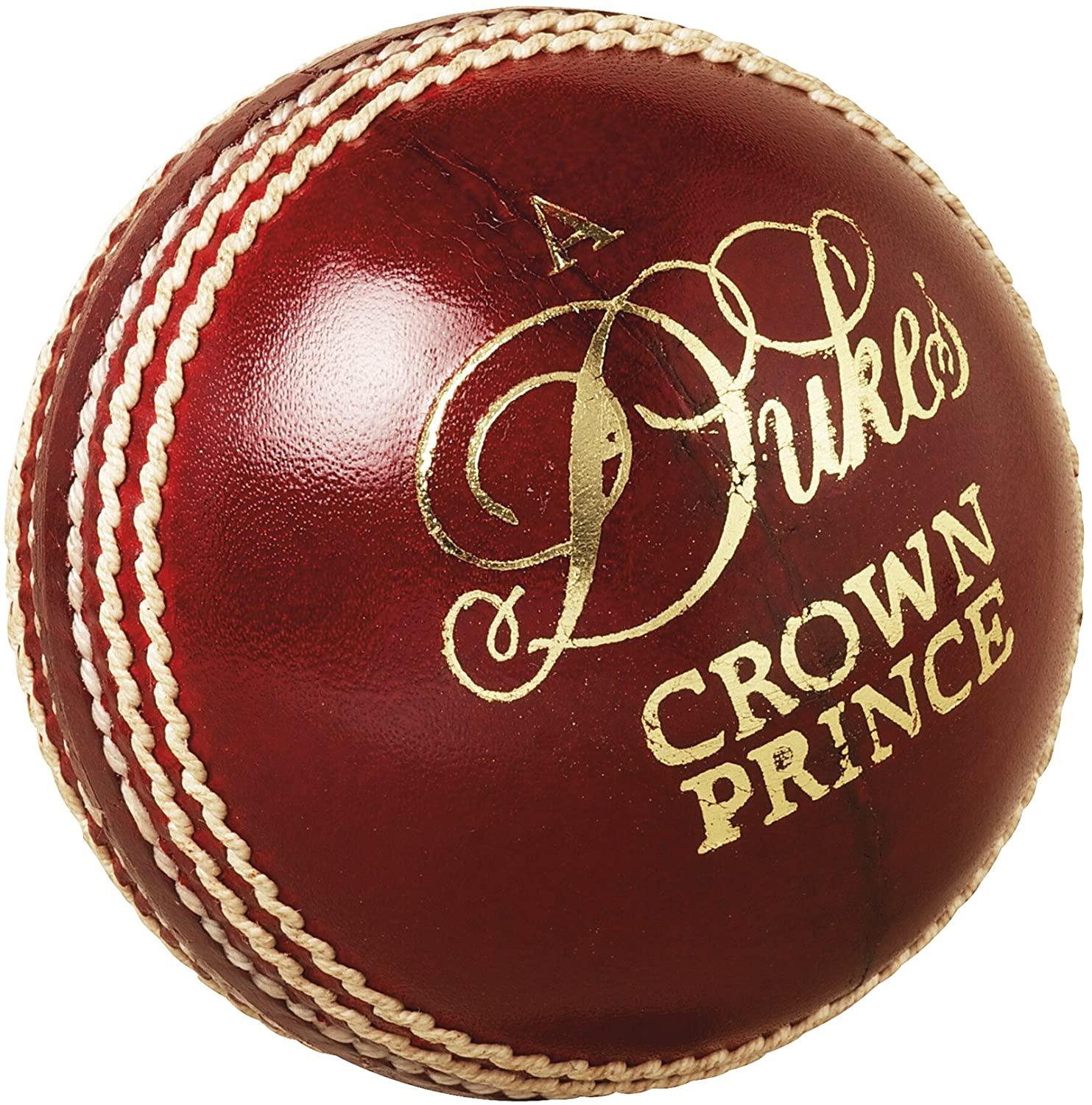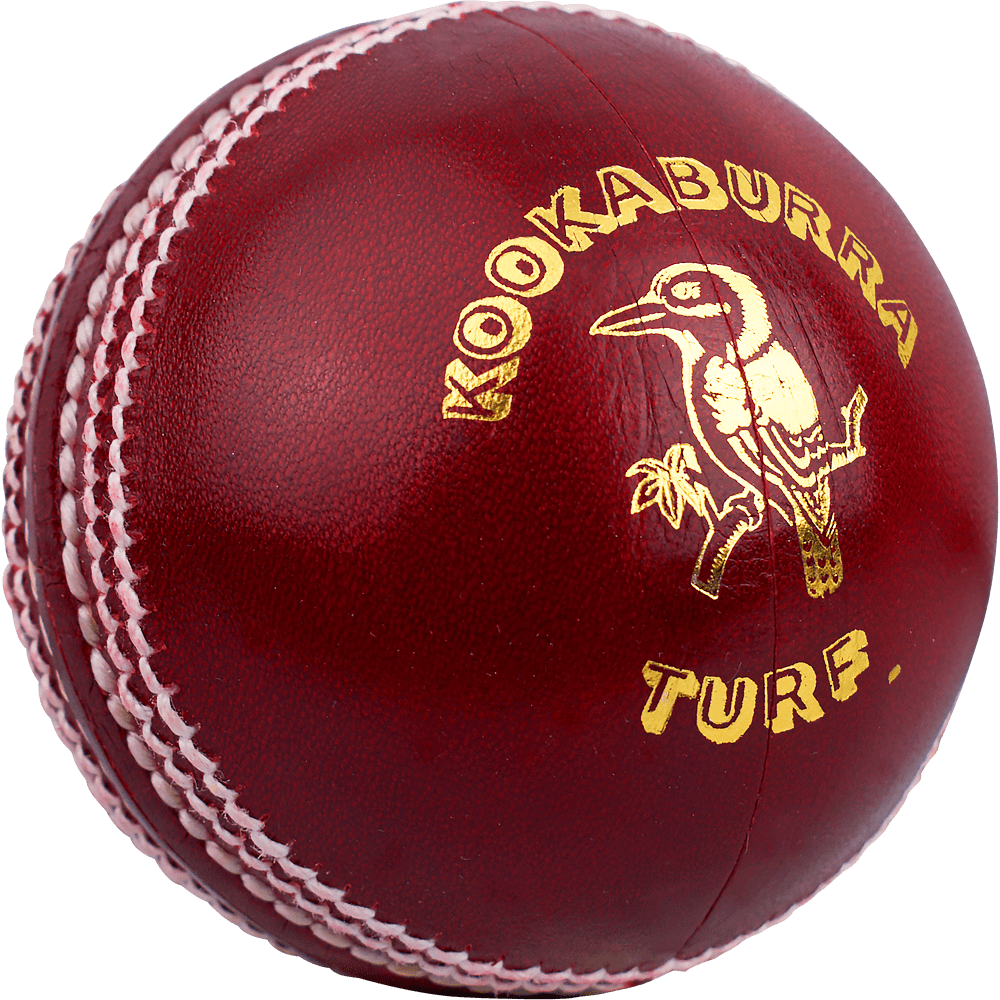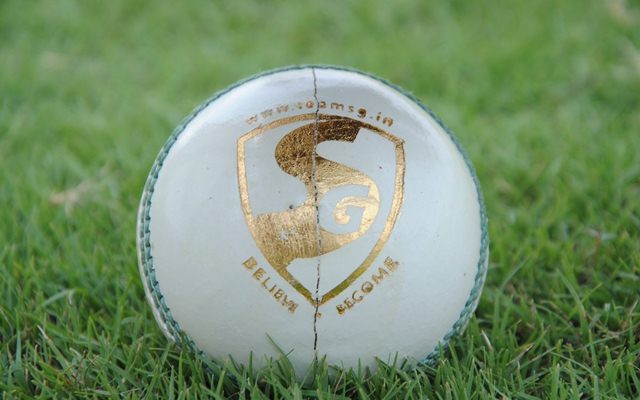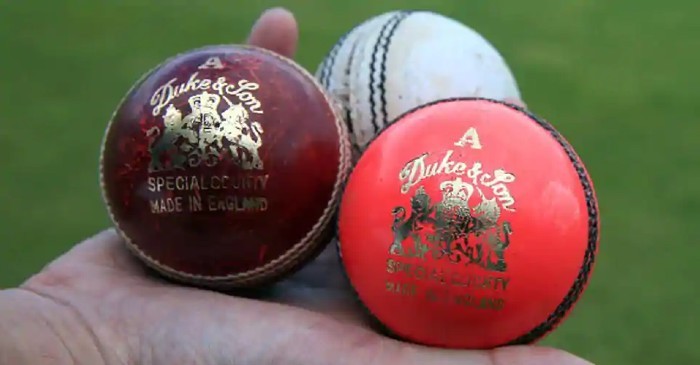Table of Contents
The game of cricket revolves around both bat and ball. Bowlers try to dismiss the batsmen with the ball, while batters strike the ball with his bat by defending, attacking or simply leaving it.
A ball roughly weighs in between 155.9 and 163 grams, while its circumference ranges between 22.4 and 22.9 centimetres.
In earlier days, the red-ball was used in both Test cricket and ODI cricket. With the era of coloured clothing coming into practice, white balls are now used during limited-overs fixtures.
There are often comparisons made between the red ball and the white ball, in terms of swing and seam. It is learnt that the white ball swings more than the red cherry.
To promote Day-Night game, now Pink balls have also come into the reckoning. The attributes of a pink ball are still under research.
Today, let’s have a look at the different types of balls used in international cricket and how it differs from each other:
1. The Dukes’ Ball

Dukes’ ball is the oldest out of all balls used in cricket. The origin of the ball dates back to 1760 when the production started at Tonbridge in the United Kingdom.
The colour of the ball is darker when compared to the others. The ball is entirely handmade and is the most durable as the ball takes a longer period of time to get old.
The likes of James Anderson and Stuart Broad have profited the most as it assists seamers in overcast English conditions.
Dukes ball achieves the greatest magnitude of movement in conditions of England. Only two countries use the ball in all forms of the game, namely England and West Indies.
2. The Kookaburra Ball

Kookaburra was established in 1890 and has been a chief manufacturer of cricketing goods in the last 128 years. The Kookaburra ball is internationally acclaimed as the number one ball manufacturer.
The first time the Australian Cricket Board used kookaburra balls was during the 1946/47 Ashes series. Its factory is based in Melbourne, which uses some of the finest raw materials using state of the art facilities.
Unlike the Dukes’, the Kookaburra is entirely made using machines. The seam of the Kookaburra is the least prominent when compared to other different types. However, the ball assists pace bowlers with movement up to 30 overs.
Australia, South Africa, Pakistan, Sri Lanka and South Africa, are chief users of Kookaburra balls in international as well as domestic cricket.
3. The SG Ball

SG is the abbreviation for Sanspareils Greenlands ball, which was set up by Kedarnath and Dwarkanath brothers in Sialkot in 1931.
Post-independence, its base shifted to Meerut. SG balls were then approved by BCCI for its usage in Test matches in 1991.
SG balls have a wider seam which remains in proper shape even after a tough day’s play. Due to the dry conditions in India, the ball loses its shine very quickly but assists bowlers with reverse swing after 40 overs of play. This type of ball is only used for matches in India.
